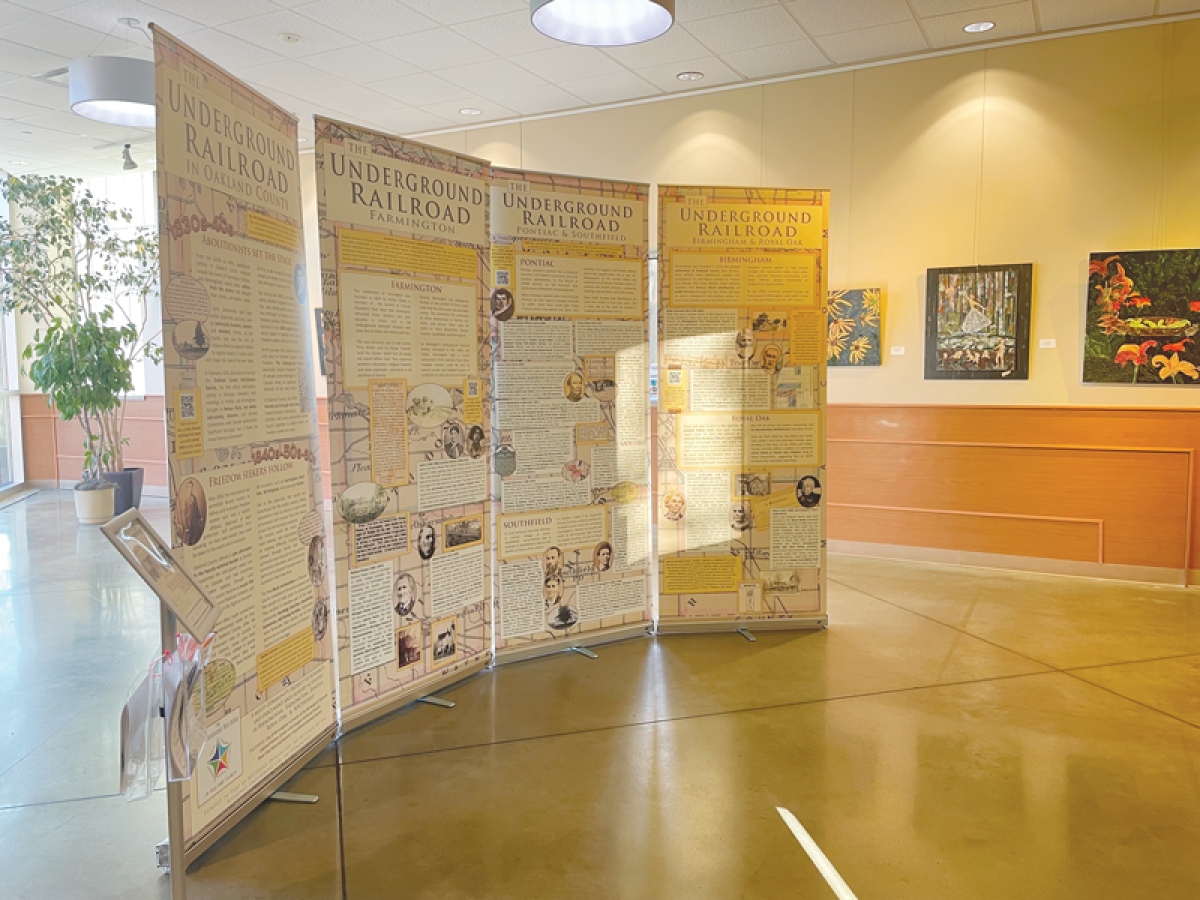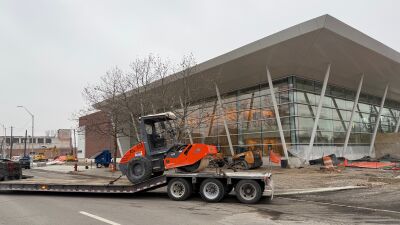FARMINGTON HILLS — The cities of Farmington Hills and Farmington have each been selected to be part of a multi-city tour of a traveling exhibit.
The “Underground Railroad and Abolition Movement in Southern Oakland County-Traveling Exhibit and Website” was initially displayed at the Southfield Public Library in January.
After being hosted by the Oakland History Center/Oakland County Pioneer and Historical Society in Pontiac during February and March, the exhibit made its way to Farmington Hills City Hall, where it is scheduled to be on display for the remainder of the month.
After going to Birmingham City Hall in May and June, it is set to be at the Farmington library in July and August, followed by the Southfield Public Library in September and October, the Pontiac Library in November, the Royal Oak Greater Historical Society in January and February, and at the Greater West Bloomfield Historical Society in March and April.
In December, the Southfield Historical Society is scheduled to host the exhibit at a venue that has not yet been determined.
According to a press release from the Birmingham Museum, the exhibit focuses on how local Oakland County communities developed a network to help formerly enslaved people elude bounty hunters to reach safety in Canada, and how physical proximity, transportation and interpersonal connections of those involved may have played a part.
Brian Golden, who is the president of the Farmington Historical Society and a member of the Farmington Hills Historical Commission, said that the project was spearheaded by Leslie Pielack, who is the director of the Birmingham Museum.
“She centered into the five communities that seemed to have a lot of abolitionist movement within the county and reported freedom seekers that came through this area to find their way to Canada,” Golden said. “Farmington was founded by Quakers, and Quakers were ardent abolitionists.”
Golden said that the sons of Arthur Power, who founded Farmington, were “extremely” vocal about their abolitionist leanings. Abolitionists were individuals who wanted to abolish slavery.
Arthur Powers’ sons were Nathan and Abram.
“His two sons not only were instrumental in helping freedom seekers find their way to Canada, but Nathan Power invested his own monies, along with others … into freedom farms that were located in Canada.”
The Birmingham Museum’s release states that the project was inspired by recent research by the museum that shed light on the Underground Railroad connections of abolitionist Elijah Fish and formerly enslaved freedom seeker George Taylor.
According to the release, Taylor fled to Michigan in 1855 via the Underground Railroad, coming through Oakland County and settling in Birmingham after attaining freedom in Canada.
“George and his wife, Eliza, were well known in town and were the first African Americans to own property in Birmingham,” the release states. “While researching the Taylors, museum staff found that Birmingham pioneer Elijah Fish was actively involved in Oakland County’s anti-slavery movement from the 1830s on.”
The exhibition is currently in the rotating exhibit gallery inside Farmington Hills City Hall, near the City Council chamber, according to a press release from the city of Farmington Hills.
Business hours are typically 8:30 a.m.-4:30 p.m. weekdays.
The exhibit is enhanced, according to the release, with an interactive digital map and website, which expands on the information presented in the panels.
Pielack shared her perspective as to what helped make the exhibit a reality.
“The key reason this project has been successful is that it is a collaborative one that involves people of diverse backgrounds in many settings working together to bring these stories to the public for the benefit of all of us,” Pielack stated via email.
According to Golden, Pielack was looking for volunteer help to put together the names of the people who were involved.
“Not just abolitionists, but freedom seekers as well,” Golden said. “It was more about the people — the abolitionists and the freedom seekers. We were able to have primary source materials that validated the information that we each contributed to the four different banner displays. They were designed so that they could be traveling.”
Pielack stated that the amount of information has been “astounding,” with the interactive web map still being a work in progress.
“This traveling exhibit combines all the best in a public history project, in my opinion,” she stated. “It helps local historians tell a complex story of a truly important time in our past — the struggle against slavery — in a way that is free and accessible to a broad public audience. It is based on documented evidence, but is engaging and easy to understand. And it includes maps and photos that help connect it to the real people and places where this history happened, right here in Oakland County.”
Pielack added that the exhibit can be updated as new information is discovered.
According to the release from the Birmingham Museum, the project is a grant-funded effort, supported in part by the Michigan Council for the Humanities, which is an affiliate of the National Endowment for the Humanities.
The release states that the grant award was for $14,475, which was combined with a contribution of $2,500 from the Friends of the Birmingham Museum and donations of professional services and volunteer personnel.
Golden shared his perspective as to the purpose of the exhibit.
“Basically, the whole object of the project was to elevate people’s awareness as to the fact that there were abolitionists all over Oakland County, and the need for us to be able to tell the story,” he said. “That’s what’s really important.”
According to Pielack, phase two of the project will “extend our research to northern, eastern, and western areas of Oakland County.”
“Phase two’s additional project components will create classroom-ready, curriculum-based lesson plans and teacher resources for primary and secondary schools that will be available by January 2025 to all schools through Oakland Schools,” Pielack stated. “We will also be publishing a print and electronic version of a student resource guide with detail about some of Oakland County’s freedom seekers and abolitionists that will be distributed free to schools and libraries.”
For Golden, the exhibit helps to represent a “terrific” part of the community’s history.
“Because of the diversity that exists in the Farmington community, or Farmington/Farmington Hills, this is a welcome piece of history and information that is being embraced by all peoples,” he said.
 Publication select ▼
Publication select ▼


























